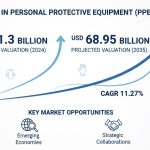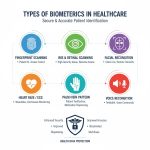Bortezomib Market: Comprehensive Analysis of Growth Drivers and Future Prospects
The Bortezomib market continues to evolve as a critical component of modern cancer care, offering hope to patients with hematological malignancies while presenting ongoing opportunities for pharmaceutical innovation and market expansion. Success in this dynamic market requires careful navigation of regulatory requirements, clinical evidence generation, and strategic positioning to address both current challenges and future growth opportunities.
Overview of Bortezomib Market
According to analysts at Vantage Market Research, The global Bortezomib Market is valued at USD 25.1 Million in 2024 and is projected to reach a value of USD 41.16 Million by 2035 at a CAGR (Compound Annual Growth Rate) of 4.6% between 2025 and 2035.
The Bortezomib market represents a crucial segment within the global oncology therapeutics landscape, primarily driven by the increasing prevalence of multiple myeloma and mantle cell lymphoma worldwide. Bortezomib, marketed under the brand name Velcade, functions as a proteasome inhibitor that disrupts cellular protein regulation, ultimately leading to cancer cell death. This innovative therapeutic approach has revolutionized treatment protocols for hematological malignancies since its initial approval by regulatory authorities. The market’s expansion is significantly influenced by rising cancer incidence rates, particularly among aging populations, coupled with enhanced diagnostic capabilities and growing awareness about targeted cancer therapies. Additionally, the development of combination therapies incorporating bortezomib with other anticancer agents has broadened its clinical applications, creating substantial market opportunities. The pharmaceutical industry’s continued investment in research and development activities, along with favorable reimbursement policies in developed nations, further accelerates market growth trajectories.
Get a Sample Copy:- https://www.vantagemarketresearch.com/bortezomib-market-4046/request-sample
Competitive Landscape
- Reddys Laboratories
- TAPI Teva
- Chem-Stone (Guangzhou)
- Gland Pharma
- Pfizer
- Scion Pharmaceuticals
- Meitheal Pharmaceuticals
- Vinkem Labs
- Hikma Pharmaceuticals
- Farmhispania Group
- Shilpa Medicare
- Hubei Honch Pharmaceutical
- Novartis International AG
- Teva Pharmaceuticals
- Chengdu Aslee Biopharmaceuticals
- NATCO Pharma
- Qilu Pharmaceutical
- Icrom
- Coresyn
- Bristol Myers Squibb.
Market Dynamics
The Bortezomib market dynamics are characterized by several interconnected factors that collectively shape its growth trajectory and competitive landscape. The primary driver stems from the escalating global burden of hematological cancers, particularly multiple myeloma, which affects approximately 30,000 new patients annually in the United States alone. Healthcare systems worldwide are witnessing improved survival rates among patients receiving bortezomib-based treatment regimens, leading to increased adoption by oncologists and hematologists. The market benefits significantly from ongoing clinical trials exploring novel combination therapies, which have demonstrated enhanced efficacy compared to monotherapy approaches. Regulatory approvals for new indications and formulations continue to expand the addressable patient population, while generic competition following patent expirations creates pricing pressures that simultaneously increase accessibility. Healthcare infrastructure improvements in emerging economies, coupled with rising healthcare expenditure, contribute to market expansion in previously untapped regions. The integration of personalized medicine approaches and biomarker-driven treatment selection further optimizes therapeutic outcomes, strengthening physician confidence in prescribing bortezomib-based protocols.
Market Segmentation
By Types
- 1mg
- 5mg
- 5mg
- Others
By Applications
- Lymphoma
- Mantle Cell Lymphoma
- Multiple Myeloma (55.5%)
- Others
By Route of Administration
- Oral
- Intravenous
- Subcutaneous
- Others
By Dosage
- Tablet
- Injection
- Powder
- Others
By Distribution Channel
- Hospital Pharmacy
- Retail Pharmacy
- Online Pharmacy
By End-Users
- Clinic
- Hospital (51.5% )
- Others
Top Trends
The Bortezomib market is experiencing several transformative trends that are reshaping treatment paradigms and market dynamics. The emergence of subcutaneous formulations has significantly improved patient convenience and compliance, reducing the need for frequent hospital visits while maintaining therapeutic efficacy. Combination therapy strategies incorporating bortezomib with immunomodulatory drugs, monoclonal antibodies, and newer targeted agents are demonstrating superior clinical outcomes, leading to their adoption as standard-of-care protocols. The development of next-generation proteasome inhibitors is creating competitive pressure while simultaneously validating the proteasome inhibition mechanism, potentially expanding the overall market. Personalized medicine approaches utilizing genetic profiling and biomarker identification are enabling more precise patient selection, improving treatment response rates and reducing adverse effects. Digital health technologies and telemedicine platforms are facilitating remote patient monitoring and treatment adherence, particularly important during ongoing therapy cycles. The trend toward earlier treatment intervention in cancer care is expanding bortezomib’s application to newly diagnosed patients rather than limiting its use to relapsed or refractory cases. Additionally, emerging markets are witnessing increased adoption due to improved healthcare infrastructure and growing physician expertise in managing complex hematological malignancies.
Top Report Findings
- The global Bortezomib market is projected to reach significant valuation milestones driven by expanding clinical applications and growing patient populations requiring targeted cancer therapies.
- North America dominates market share due to advanced healthcare infrastructure, favorable reimbursement policies, and high adoption rates of innovative cancer treatments among oncology practices.
- The subcutaneous formulation segment is experiencing rapid growth, offering improved patient convenience and reduced healthcare system burden compared to intravenous administration methods.
- Combination therapy protocols incorporating bortezomib are becoming the preferred treatment approach, demonstrating superior efficacy compared to single-agent therapies in clinical trials.
- Generic competition is intensifying following patent expirations, creating pricing pressures while simultaneously improving treatment accessibility for broader patient populations.
- Asia-Pacific region represents the fastest-growing market segment, driven by increasing cancer incidence, improving healthcare infrastructure, and rising disposable income levels.
- Multiple myeloma remains the largest indication segment, accounting for the majority of bortezomib prescriptions globally due to established clinical evidence and treatment guidelines.
- Hospital pharmacies constitute the primary distribution channel, reflecting the specialized nature of cancer treatment and the need for professional administration and monitoring.
Challenges
The Bortezomib market faces several significant challenges that could potentially impact its growth trajectory and market penetration. The emergence of severe adverse effects, including peripheral neuropathy, thrombocytopenia, and gastrointestinal complications, creates treatment compliance issues and necessitates careful patient monitoring, potentially limiting its broader adoption. High treatment costs associated with bortezomib therapy present substantial financial barriers for patients and healthcare systems, particularly in developing countries where insurance coverage may be limited or nonexistent. The complexity of administration protocols and the need for specialized healthcare infrastructure create accessibility challenges in regions with underdeveloped medical facilities. Patent expirations and subsequent generic competition are exerting downward pressure on pricing, potentially affecting revenue streams for innovator companies while simultaneously requiring continued investment in research and development activities. Regulatory approval processes for new indications and combination therapies often involve lengthy timelines and substantial financial investments, creating uncertainty for pharmaceutical companies. Additionally, the evolving competitive landscape with newer targeted therapies and immunotherapies may potentially challenge bortezomib’s market position in certain patient populations.
Opportunities
The Bortezomib market presents numerous compelling opportunities for sustained growth and market expansion across various dimensions. The development of novel formulations and delivery mechanisms, including oral preparations and extended-release formulations, could significantly improve patient convenience and treatment adherence while expanding market reach. Emerging markets in Asia-Pacific, Latin America, and Africa offer substantial growth potential due to increasing healthcare spending, improving diagnostic capabilities, and rising awareness about advanced cancer treatments. The exploration of bortezomib applications in solid tumors through ongoing clinical trials could dramatically expand the addressable patient population beyond current hematological indications. Combination therapy development with emerging immunotherapies, CAR-T cell treatments, and novel targeted agents presents opportunities for enhanced clinical outcomes and market differentiation. The integration of artificial intelligence and machine learning technologies in treatment selection and patient monitoring could optimize therapeutic protocols and improve success rates. Strategic partnerships between pharmaceutical companies and healthcare technology firms could facilitate innovative delivery models and patient support programs, enhancing overall treatment experiences and outcomes.
Key Questions Answered in Bortezomib Market Report
- What are the primary factors driving growth in the global Bortezomib market?
- Which geographic regions are expected to experience the highest growth rates in Bortezomib adoption?
- How is the competitive landscape evolving with the introduction of generic alternatives?
- What impact do combination therapy protocols have on overall market dynamics?
- Which patient populations represent the most significant growth opportunities for Bortezomib?
- How are regulatory changes affecting market access and pricing strategies?
- What role do subcutaneous formulations play in market expansion?
- Which distribution channels are most effective for Bortezomib market penetration?
- How do adverse effect profiles influence physician prescribing patterns?
- What are the key success factors for companies operating in the Bortezomib market?
- How is the emergence of biosimilars affecting market competition?
- What are the long-term implications of patent expirations on market dynamics?
Regional Analysis
The global Bortezomib market exhibits distinct regional characteristics reflecting varying healthcare infrastructure, economic conditions, and regulatory environments. North America maintains its position as the dominant market, driven by advanced healthcare systems, comprehensive insurance coverage, and early adoption of innovative cancer therapies among oncology practices. The region benefits from well-established clinical guidelines, robust reimbursement frameworks, and high physician awareness regarding proteasome inhibitor mechanisms. Europe represents the second-largest market, characterized by stringent regulatory standards, universal healthcare systems, and growing emphasis on cost-effectiveness in treatment selection. The European market demonstrates strong adoption rates for combination therapies and subcutaneous formulations, supported by comprehensive cancer care networks and specialized treatment centers. Asia-Pacific emerges as the fastest-growing region, propelled by increasing cancer incidence rates, rapidly improving healthcare infrastructure, and expanding middle-class populations with greater healthcare access. Countries like China, India, and Japan are witnessing significant market growth due to government healthcare initiatives and rising awareness about targeted cancer treatments. Latin America shows promising growth potential, though constrained by economic limitations and varying healthcare system capabilities across different countries. The Middle East and Africa region presents emerging opportunities, particularly in countries with developing healthcare infrastructure and increasing focus on specialized cancer care, though market penetration remains limited by economic and logistical challenges.
![[Market Research Reports] – Research Google News Blog | VMR.Biz](https://www.vmr.biz/wp-content/uploads/2022/12/logo-removebg-preview.png)











